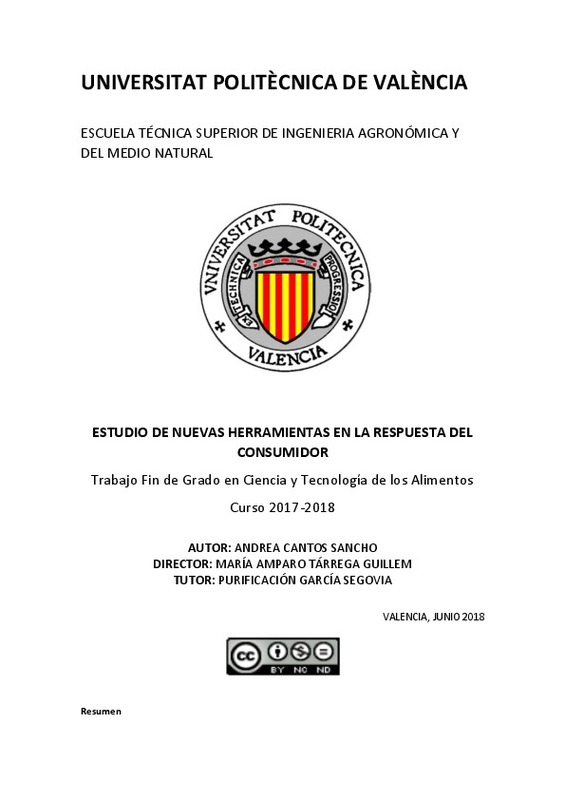|
Resumen:
|
[ES] El principal objetivo de este trabajo es el empleo de nuevas herramientas y métodos de medida
de la opinión del consumidor y la respuesta a nuevos alimentos. Se investigaron dos aspectos,
en primer lugar, el estudio ...[+]
[ES] El principal objetivo de este trabajo es el empleo de nuevas herramientas y métodos de medida
de la opinión del consumidor y la respuesta a nuevos alimentos. Se investigaron dos aspectos,
en primer lugar, el estudio de la opinión del consumidor mediante el análisis de la información
extraída de redes sociales tales como Twitter y, en segundo lugar, la evaluación de la respuesta
emocional del consumidor ante nuevos productos.
En el primer caso, se analizó lo que se dice en Twitter cuando se menciona el término “sin
gluten”. Para ello, se descargaron tweets en español que contenían los términos “sin gluten” y
“gluten free” mediante el paquete rtweet del software R. Se procesaron 3000 tweets mediante
lectura, codificación y clasificación de términos y conceptos en categorías. De esta manera, es
posible saber de qué se está hablando en las redes sociales sobre un tema en particular (en este
caso lo relacionado con “sin gluten” en Twitter), lo que puede ser una herramienta de gran
utilidad en estudios de consumidores.
En el segundo caso, se desarrolló el cuestionario para evaluar la respuesta emocional del
consumidor respecto a un nuevo tipo de producto: “smoothies”. El cuestionario se utilizó para
evaluar la respuesta emocional de 100 consumidores ante 5 muestras de “smoothies”. Esta
información es de vital importancia para el desarrollo y reformulación de productos que
satisfagan las necesidades y expectativas del consumidor.
[-]
[EN] The main objective of this dissertation is the use of new tools and methods for measuring
consumers opinion and response to new food products. Two aspects were investigated, in the
first place, the study of the ...[+]
[EN] The main objective of this dissertation is the use of new tools and methods for measuring
consumers opinion and response to new food products. Two aspects were investigated, in the
first place, the study of the opinion of the consumer through the analysis of information
gathered from social networks such as Twitter and, secondly, the evaluation of the emotional
response of the consumer to new products.
In the first case, the object of analysis was what is said in Twitter when the term “sin gluten” is
mentioned. For such purpose, tweets in Spanish which contained the terms “sin gluten” and
“gluten free” were downloaded by using the package retweet of the R software. 300 tweets
were processed through reading, codification and classification of terms and concepts in
categories. This way, it is possible to know what is being said about a certain issue in the social
networks (in this case in relation with the term “sin gluten” in Twitter), a method which can
constitute a very useful tool when it comes to consumer studies.
In the second case, a questionnaire was developed in order to evaluate the emotional response
of the consumer to a new kind of product: smoothies. The questionnaire was used to assess the
emotional answer of 100 consumers to 5 samples of smoothies. This information is of vital
significance for the development and reformulation of products which satisfy the consumer
needs and expectations.
[-]
|







